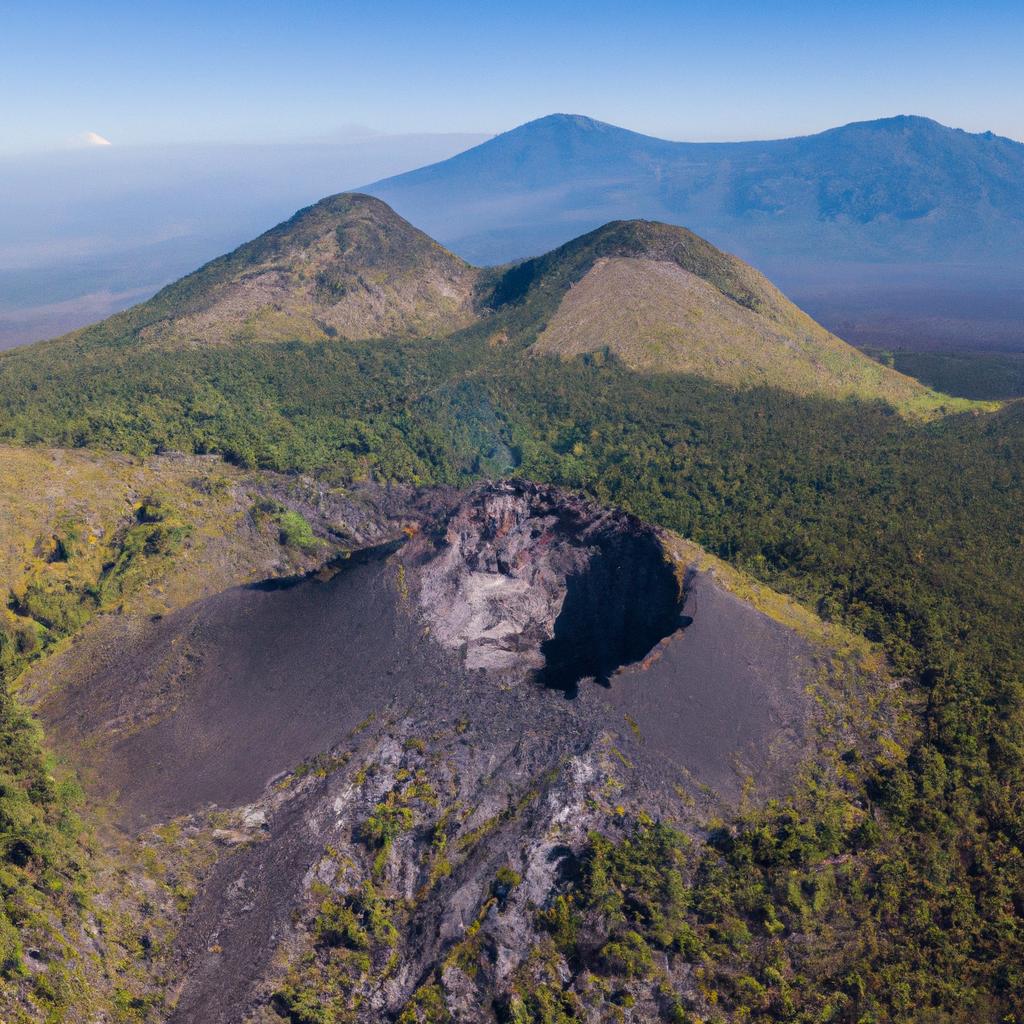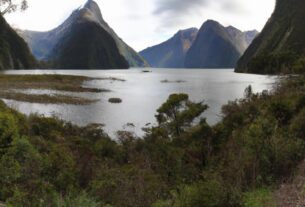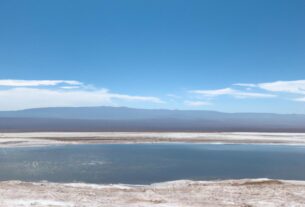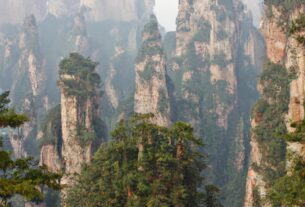Have you ever been captivated by the extraordinary tale of Paricutin, Mexico’s youngest volcano? The formation of Paricutin is an enthralling story that has fascinated both scientists and tourists. In this article, we will delve into the birth and formation of Paricutin, as well as its profound impact on the surrounding community.
The Birth of Paricutin: A Spectacular Formation
Paricutin emerged in 1943 in the Mexican state of Michoacan. Its genesis began with a minor earthquake that startled local farmers. However, it was on February 20, 1943, when Dionisio Pulido, a farmer, bore witness to the birth of the volcano. He watched as the ground in his cornfield split open, unleashing smoke and ash. Over the following days, the eruption persisted, and the volcano continued to grow.
Paricutin is classified as a cinder cone volcano, formed by the accumulation of loose volcanic fragments ejected from the vent. The subduction of the Cocos Plate beneath the North American Plate triggered the volcano’s formation. Magma, produced by the melting of the subducted plate sinking into the Earth’s mantle, fueled the eruption.
Rapid in its development, Paricutin soared to a height of 336 meters within a year. By the eruption’s conclusion in 1952, it stood at an impressive height of 424 meters. The volcano’s formation was meticulously documented, offering scientists an extraordinary opportunity to study the birth and growth of a volcano.
The Paricutin Eruption: Impact and Effects
The Paricutin eruption stands as one of the most momentous volcanic events of the 20th century. Lasting nine years, it left an indelible mark on the surrounding community. Let’s delve into the timeline of the eruption, as well as the impact it had on the land and its inhabitants.
Timeline of the Paricutin Eruption
On February 20, 1943, the Paricutin eruption commenced, spewing forth explosive eruptions and lava flows. Carried by the wind, ash and smoke blanketed the surrounding countryside, wreaking havoc on crops and livestock.
The most impactful eruption occurred on February 25, 1943. In its wake, a colossal explosion propelled a lava flow that engulfed the nearby villages of San Juan Parangaricutiro and Paricutin. Over subsequent years, the eruption persisted, fueling the volcano’s growth until it reached a height of 424 meters.
Effects of the Paricutin Eruption
The eruption of Paricutin exerted a profound influence on the environment and the local community. The ash and smoke from the eruption devastated the surrounding landscape, causing extensive damage to crops and livestock. Additionally, the eruption transformed the topography, sculpting new hills and valleys with the deposition of magma and ash.
The eruption dealt a severe blow to the community’s economy. Fertile farmlands were obliterated, resulting in significant losses for farmers. The destruction of several villages forced inhabitants to relocate, profoundly altering their lives.
Despite its destructive nature, the Paricutin eruption offered scientists an unprecedented opportunity to study the birth and evolution of a volcano. It stands as one of the most extensively researched volcanic phenomena, providing invaluable insights into the formation and growth of volcanoes.
Paricutin: A Unique Tourist Experience
Paricutin not only astounds with its natural wonder but also serves as a magnet for tourists worldwide. Its exceptional formation and rich history lure visitors from far and wide. Join us as we explore the tourist attractions, activities, and the significance of tourism to the local community.
Tourist Attractions in Paricutin
Paricutin beckons adventurers seeking the thrill of experiencing an active volcano firsthand. Its formation and history offer visitors a unique opportunity to witness the raw power of nature. Exploring the surrounding countryside allows visitors to bear witness to the eruption’s impact on the landscape.
One of the prominent tourist attractions in Paricutin is the remains of the San Juan Parangaricutiro Church. Only its tower withstands the test of time, serving as a symbol of the eruption’s devastating power and a favorite spot for capturing breathtaking photos.
Activities in Paricutin
Paricutin offers visitors a plethora of activities to choose from. Scaling the volcano’s slopes provides awe-inspiring vistas of the picturesque countryside. Furthermore, exploring the nearby villages unveils the profound impact of the eruption on the local community.
Horseback riding is another popular activity in Paricutin, allowing visitors to immerse themselves in the surrounding countryside while witnessing the eruption’s lingering traces. The neighboring villages offer a delightful cultural experience, with traditional crafts and local cuisine awaiting exploration.
The Importance of Tourism to the Community
Tourism plays a vital role in the community surrounding Paricutin. The eruption dealt a severe blow to the local economy, leaving many farmers bereft of their livelihoods. Tourism provides an alternative source of income, breathing new life into the community and revitalizing the local economy.
Furthermore, tourism grants the community an opportunity to share its culture and history with visitors. The local crafts and cuisine serve as integral parts of the community’s identity, and tourism provides a platform for visitors to experience them firsthand.
In conclusion, Paricutin offers visitors a distinctive journey into nature’s realm, while shedding light on the eruption’s profound impact on the surrounding community. The tourism industry stands as a pillar of support for the local economy, enabling the community to showcase its culture and heritage. TooLacks encourages everyone to embrace the beauty of Paricutin through responsible tourism.
Preservation: Safeguarding Paricutin for Generations to Come
Preserving Paricutin for future generations is of paramount importance. The volcano, standing as a testament to nature’s wonders, requires diligent efforts to ensure its integrity. In this section, we will explore the measures taken to safeguard Paricutin, existing conservation efforts, and future plans for its preservation.
Efforts to Preserve Paricutin
Since the eruption’s conclusion in 1952, Paricutin’s unique splendor prompted its designation as a protected natural area by the Mexican government. The establishment of Paricutin National Park in 1949, spanning 1,789 hectares, ensures the conservation and management of the park by the National Commission of Natural Protected Areas (CONANP).
Preserving Paricutin entails protecting the area from any harm caused by visitors. The park enforces strict regulations, including prohibitions on camping and fires, to safeguard the environment. Responsible tourism is actively promoted, calling on visitors to respect the ecosystem and the local community.
Conservation Measures in Place
To guarantee the preservation of Paricutin, a range of conservation measures has been implemented. The park employs a monitoring system to detect any changes in volcanic activity. Regular surveys monitor the flora and fauna in the area, illuminating the delicate balance of the ecosystem.
Reforestation and ecosystem restoration play key roles in Paricutin’s conservation. Conservation efforts have successfully rejuvenated the vegetation destroyed by the eruption, while measures to control invasive species are enforced, protecting the local ecosystem.
Future Plans for Paricutin Preservation
Preserving Paricutin remains an ongoing endeavor, with multiple plans in place to safeguard its future. The park intends to continue reestablishing the vegetation coverage, preventing invasive species from encroaching on the ecosystem.
Additionally, the park aims to develop sustainable tourism activities, allowing visitors to relish Paricutin’s natural allure responsibly. Prospects of eco-tourism, such as hiking and bird-watching, will enable visitors to embrace the park’s splendor while contributing to its conservation.
Conclusion: Safeguarding Paricutin – A Shared Responsibility
Paricutin stands as a unique natural wonder that has captivated the imagination of scientists and tourists alike. Its formation and eruption offer invaluable insights into the birth and evolution of volcanoes. Preserving Paricutin is a responsibility we all share.
Dedicated efforts have been made to protect and preserve Paricutin for future generations, and these endeavors must continue. As visitors, we must respect the environment and the local community by adhering to the established rules and regulations. Supporting the park’s conservation efforts and embracing sustainable tourism practices are equally vital.
Paricutin showcases Mexico’s natural heritage, and as a global community, we must unite to ensure its preservation for generations to come. TooLacks encourages everyone to visit Paricutin and revel in its natural allure, always mindful of the importance of responsible tourism.



